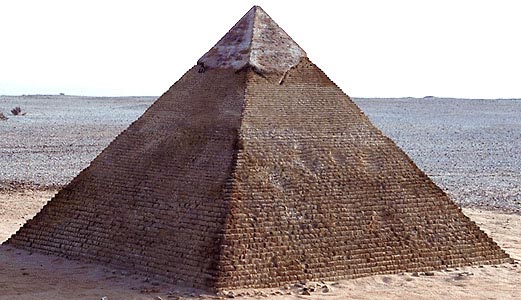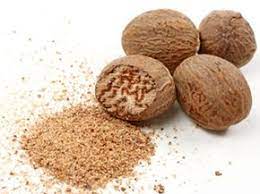ĐỀ THI IELTS READING VÀ ĐÁP ÁN
The Step Pyramid of Djoser
A
The pyramids are the most famous monuments of ancient Egypt and still hold enormous interest for people in the present day. These grand, impressive tributes to the memory of the Egyptian kings have become linked with the country even though other cultures, such as the Chinese and Mayan, also built pyramids. The evolution of the pyramid form has been written and argued about for centuries. However, there is no question that, as far as Egypt is concerned, it began with one monument to one king designed by one brilliant architect: the Step Pyramid of Djoser at Saqqara.
Các kim tự tháp là những công trình kiến trúc nổi tiếng nhất của người Ai Cập cổ xưa và vẫn thu hút sự quan tâm lớn của mọi người cho đến nay. Những tượng đài to lớn, uy nghi để tưởng nhớ về các vị vua Ai cập này đã trở nên gắn liền với đất nước này dù các nền văn hóa khác như người Trung Quốc và người Maya cũng xây dựng kim tự tháp. Sự thay đổi của các hình thái kim tự tháp được ghi lại và tranh cãi hàng thế kỷ. Tuy nhiên, đối với người Ai Cập không có gì bàn cãi rằng nó bắt đầu từ một lăng mộ cho một vị vua được xây dựng bởi một kiến trúc sư tài năng: Kim tự tháp bậc thang của Djoser tại Saqqara
B
Djoser was the first king of the Third Dynasty of Egypt and the first to build in stone. Prior to Djoser’s reign, tombs were rectangular monuments made of dried clay brick, which covered underground passages where the deceased person was buried. For reasons which remain unclear, Djoser’s main official, whose name was Imhotep, conceived of building a taller, more impressive tomb for his king by stacking stone slabs on top of one another, progressively making them smaller, to form the shape now known as the Step Pyramid. Djoser is thought to have reigned for 19 years, but some historians and scholars attribute a much longer time for his rule, owing to the number and size of the monuments he built.
Djoser là vị vua đầu tiên của Vương triều thứ ba của Ai Cập và cũng là người đầu tiên xây dựng bằng đá. Trước triều đại của Djoser, mồ mả là những lăng mộ vuông góc được làm từ gạch đất sét khô bao gồm nhiều đường đi dưới lòng đất nơi mà những người đã khuất được chôn cất. Vì nhiều lý do vẫn chưa rõ ràng, vị cận thần của Djoser tên là Imhotep đã nảy ra suy nghĩ xây một ngôi mồ cao và uy nghi hơn cho vị vua của mình bằng cách chồng các phiến đá lên nhau, và nhỏ dần, hình thành nên hình dáng mà chúng ta gọi là Kim tự tháp bậc thang như hiện nay. Djoser được cho rằng trị vì 19 năm, nhưng một vài nhà lịch sử và các nhà học giả cho rằng ông ta cai trị lâu hơn thế dựa vào số lượng và kích cỡ của các lăng mộ mà ông ta xây nên.
C
The Step Pyramid has been thoroughly examined and investigated over the last century, and it is now known that the building process went through many different stages. Historian Marc Van de Mieroop comments on this, writing ‘Much experimentation was involved, which is especially clear in the construction of the pyramid in the center of the complex. It had several plans before it became the first Step Pyramid in history, piling six levels on top of one another. The weight of the enormous mass was a challenge for the builders, who placed the stones at an inward incline in order to prevent the monument breaking up.’
Kim tự tháp bậc thang được xem xét và điều tra cẩn thận suốt thế kỷ vừa qua và hiện nay đã được biết rằng quy trình xây dựng nó đã trải qua nhiều giai đoạn khác nhau. Nhà sử học Marc Van de Mieroop đưa ra ý kiến về vấn đề này, viết ‘ nhiều thử nghiệm đã được đưa vào đặc biệt chắc chắn là cấu trúc xây dựng gồm có Kim tự tháp ở trung tâm của khu phức hợp. Nó đã có một vài cách bố trí trước khi trở thành Kim tự tháp bậc thang đầu tiên trong lịch sử, chồng sáu mặt phẳng lên nhau. Trọng lượng của một khối khổng lồ là một thách thức cho những người xây dựng đã đặt những tảng đá theo mặt nghiêng vào bên trong để mà ngăn các lăng mộ đổ vỡ.
D
When finally completed, the Step Pyramid rose 62 meters high and was the tallest structure of its time. The complex in which it was built was the size of a city in ancient Egypt and included a temple, courtyards, shrines, and living quarters for the priests. It covered a region of 16 hectares and was surrounded by a wall 10.5 meters high. The wall had 13 false doors cut into it with only one true entrance cut into the south-east corner; the entire wall was then ringed by a trench 750 meters long and 40 meters wide. The false doors and the trench were incorporated into the complex to discourage unwanted visitors. If someone wished to enter, he or she would have needed to know in advance how to find the location of the true opening in the wall. Djoser was so proud of his accomplishment that he broke the tradition of having only his own name on the monument and had Imhotep’s name carved on it as well.

1. Mua bộ đề gần 400 bài ielts reading - Dịch và giải chi tiết Chỉ 199k bao gồm toàn bộ đề trong bộ Cambridge ( từ bộ 1 -19) và nhiều đề thi thực tế ( xem danh sách 400 đề ielts reading tại đây). Xem bài mẫu tại đây, Bài mẫu 1, bài mẫu 2, bài mẫu 3. Giải đề bao gồm phần dịch bài đọc, dịch phần câu hỏi, giải thích chi tiết, có thể tải về, in phần đề để luyện tập, phần dịch và giải xem online.
>>>>>>>>> Đặc biệt tặng kèm Dịch và giải chi tiết bộ đề Ielts listening từ Cam 10-18 và tặng kèm hơn 300 đề Ielts thực tế ( không có lời giải chi tiết chỉ có đề và đáp án) ( khác với bộ 400 đề ở trên). Vui lòng điền thông tin theo form tại đây và thanh toán theo thông tin CK trong form.
2. Đặc biệt dành tặng 100 bạn hoàn thành buổi học thử miễn phí khóa học Ielts Speaking online 1 kèm 1, các bạn sẽ được tặng bộ đề 400k bài Ielts reading và bộ đề Ielts Listening bộ Cam từ 10-18 gồm bài dịch và giải chi tiết, giải thích từ vựng khó ( thời hạn sử dụng trong vòng 2 tháng). Xem thông tin khóa học Ielts Speaking online 1 kèm 1 và đăng ký học thử tại đây.
E
The burial chamber of the tomb, where the king’s body was laid to rest, was dug beneath the base of the pyramid, surrounded by a vast maze of long tunnels that had rooms off them to discourage robbers. One of the most mysterious discoveries found inside the pyramid was a large number of stone vessels. Over 40,000 of these vessels, of various forms and shapes, were discovered in storerooms off the pyramid’s underground passages. They are inscribed with the names of rulers from the First and Second Dynasties of Egypt and made from different kinds of stone. There is no agreement among scholars and archaeologists on why the vessels were placed in the tomb of Djoser or what they were supposed to represent. The archaeologist Jean-Philippe Lauer, who excavated most of the pyramid and complex, believes they were originally stored and then given a ‘proper burial’ by Djoser in his pyramid to honor his predecessors. There are other historians, however, who claim the vessels were dumped into the shafts as yet another attempt to prevent grave robbers from getting to the king’s burial chamber.
F
Unfortunately, all of the precautions and intricate design of the underground network did not prevent ancient robbers from finding a way in. Djoser’s grave goods, and even his body, were stolen at some point in the past and all archaeologists found were a small number of his valuables overlooked by the thieves. There was enough left throughout the pyramid and its complex, however, to astonish and amaze the archaeologists who excavated it.
G
Egyptologist Miroslav Verner writes, ‘Few monuments hold a place in human history as significant as that of the Step Pyramid in Saqqara. It can be said without exaggeration that this pyramid complex constitutes a milestone in the evolution of monumental stone architecture in Egypt and in the world as a whole.’ The Step Pyramid was a revolutionary advance in architecture and became the archetype which all the other great pyramid builders of Egypt would follow.
>>>>>Xem thêm:
♦ Tổng hợp câu trả lời, câu hỏi, từ vựng của hơn 70 chủ đề Ielts Speaking part 1
♦ Tổng hợp gần 400 đề thi Ielts reading ( bao gồm dịch, giải chi tiết, từ vựng)
Questions 14-20
Reading Passage 2 has seven paragraphs, A-G.
Choose the correct heading for each paragraph from the list of headings below.
Write the correct number, i-ix, in boxes 14-20 on your answer sheet.
List of Headings
i The areas and artefacts within the pyramid itself
ii A difficult task for those involved
iii A king who saved his people
iv A single certainty among other less definite facts
v An overview of the external buildings and areas
vi A pyramid design that others copied
vii An idea for changing the design of burial structures
viii An incredible experience despite the few remains
ix The answers to some unexpected questions
14 Paragraph A
15 Paragraph B
16 Paragraph C
17 Paragraph D
18 Paragraph E
19 Paragraph F
20 Paragraph G
Questions 21-24
Complete the notes below.
Choose ONE WORD ONLY from the passage for each answer.
Write your answers in boxes 21-24 on your answer sheet.
The Step Pyramid of Djoser
The complex that includes the Step Pyramid and its surroundings is considered to be as big as an Egyptian 21 ………………….. of the past. The area outside the pyramid included accommodation that was occupied by 22 ………………….., along with many other buildings and features.
A wall ran around the outside of the complex and a number of false entrances were built into this. In addition, a long 23 ………………….. encircled the wall. As a result, any visitors who had not been invited were cleverly prevented from entering the pyramid grounds unless they knew the 24 ………………….. of the real entrance.
Questions 25-26
Choose TWO letters, A-E.
Write the correct letters in boxes 25 and 26 on your answer sheet.
Which TWO of the following points does the writer make about King Djoser?
A Initially he had to be persuaded to build in stone rather than clay.
B There is disagreement concerning the length of his reign.
C He failed to appreciate Imhotep’s part in the design of the Step Pyramid.
D A few of his possessions were still in his tomb when archaeologists found it.
E He criticised the design and construction of other pyramids in Egypt.
Đáp án và Giải thích Chi tiết đề thi Ielts Reading
The Step Pyramid of Djoser
Questions 14-20
Reading Passage 2 has seven paragraphs, A-G.
Choose the correct heading for each paragraph from the list of headings below.
Write the correct number, i-ix, in boxes 14-20 on your answer sheet.
14iv Paragraph A.
Giải thích:
among other less definite facts = The evolution of the pyramid form has been written and argued about for centuries.
A single certainty = However, there is no question that, as far as Egypt is concerned, it began with one monument to one king designed by one brilliant architect: the Step Pyramid of Djoser at Saqqara
15vii Paragraph B
Giải thích:
Prior to Djoser’s reign, tombs were rectangular monuments made of dried clay brick, which covered underground passages where the deceased person was buried. For reasons which remain unclear, Djoser’s main official, whose name was Imhotep, conceived of building a taller, more impressive tomb for his king by stacking stone slabs on top of one another, progressively making them smaller, to form the shape now known as the Step Pyramid.
Questions 21-24
Complete the notes below.
Choose ONE WORD ONLY from the passage for each answer.
Write your answers in boxes 21-24 on your answer sheet.
The Step Pyramid of Djoser
The complex that includes the Step Pyramid and its surroundings is considered to be as big as an Egyptian 21 ……city……….. of the past.
Khu phức hợp bao gồm Kim tự tháp bậc thang và những khu vực xung quanh nó được xem là to lớn bằng với một thành phố của Ai cập trong quá khứ
The area outside the pyramid included accommodation that was occupied by 22 …priests……….., along with many other buildings and features.
Khu vực bên ngoài kim tự tháp bao gồm chỗ ăn ở được các nhà sư sử dụng cùng với nhiều tòa nhà và các khu chức năng khác.
Questions 25-26
Choose TWO letters, A-E.
Write the correct letters in boxes 25 and 26 on your answer sheet.
Which TWO of the following points does the writer make about King Djoser? Hai ý kiến nào sau đây mà người viết nói về Vua Djoser
A Initially he had to be persuaded to build in stone rather than clay.
Ngay từ đầu ông ta được thuyết phục xây dựng bằng đá thay vì đất sét
B There is disagreement concerning the length of his reign.
Có sự không thống nhất liên quan đến thời gian trị vì của ông ta
Giải thích: đoạn B
Djoser is thought to have reigned for 19 years, but some historians and scholars attribute a much longer time for his rule, owing to the number and size of the monuments he built.
C He failed to appreciate Imhotep’s part in the design of the Step Pyramid.
Ông ta không đánh giá cao phần của Imhotep trong thiết kế của Kim tự tháp bậc thang.

1. Mua bộ đề gần 400 bài ielts reading - Dịch và giải chi tiết Chỉ 199k bao gồm toàn bộ đề trong bộ Cambridge ( từ bộ 1 -19) và nhiều đề thi thực tế ( xem danh sách 400 đề ielts reading tại đây). Xem bài mẫu tại đây, Bài mẫu 1, bài mẫu 2, bài mẫu 3. Giải đề bao gồm phần dịch bài đọc, dịch phần câu hỏi, giải thích chi tiết, có thể tải về, in phần đề để luyện tập, phần dịch và giải xem online.
>>>>>>>>> Đặc biệt tặng kèm Dịch và giải chi tiết bộ đề Ielts listening từ Cam 10-18 và tặng kèm hơn 300 đề Ielts thực tế ( không có lời giải chi tiết chỉ có đề và đáp án) ( khác với bộ 400 đề ở trên). Vui lòng điền thông tin theo form tại đây và thanh toán theo thông tin CK trong form.
2. Đặc biệt dành tặng 100 bạn hoàn thành buổi học thử miễn phí khóa học Ielts Speaking online 1 kèm 1, các bạn sẽ được tặng bộ đề 400k bài Ielts reading và bộ đề Ielts Listening bộ Cam từ 10-18 gồm bài dịch và giải chi tiết, giải thích từ vựng khó ( thời hạn sử dụng trong vòng 2 tháng). Xem thông tin khóa học Ielts Speaking online 1 kèm 1 và đăng ký học thử tại đây.
Answer
14. IV
15. VII
16. II
17. V
18. I
19. VIII
20. VI
21. City
22. Priests
23. Trench
24. Location
25. & 26. B,D (in either order)
25. & 26. B,D (in either order)

.png)





